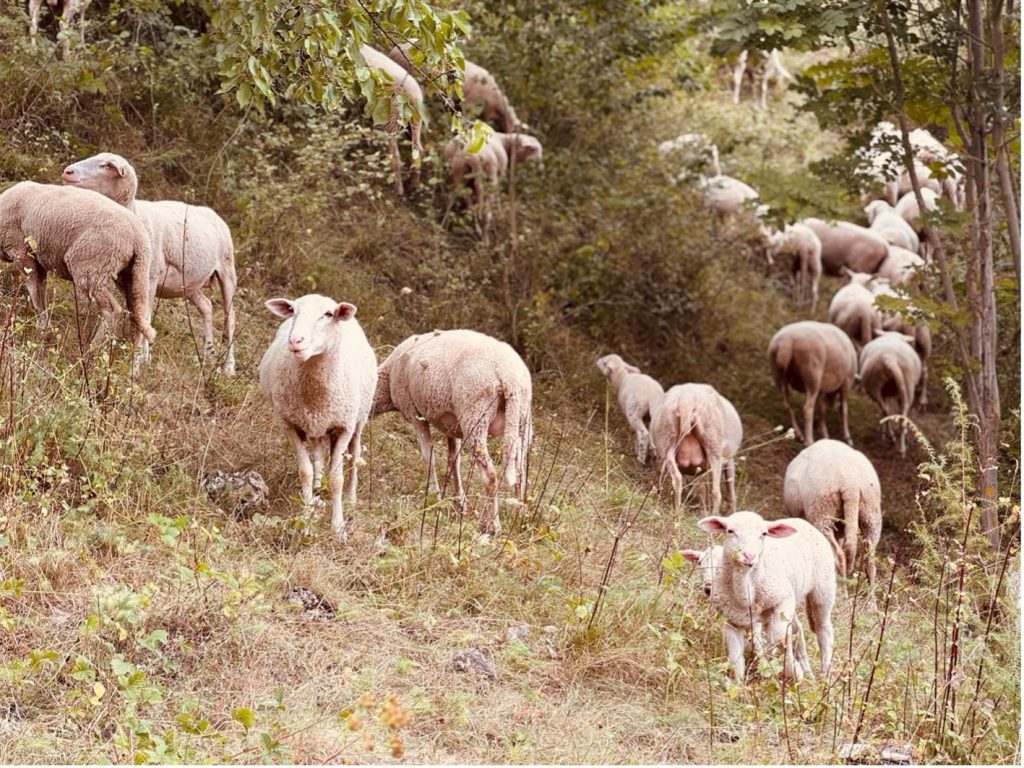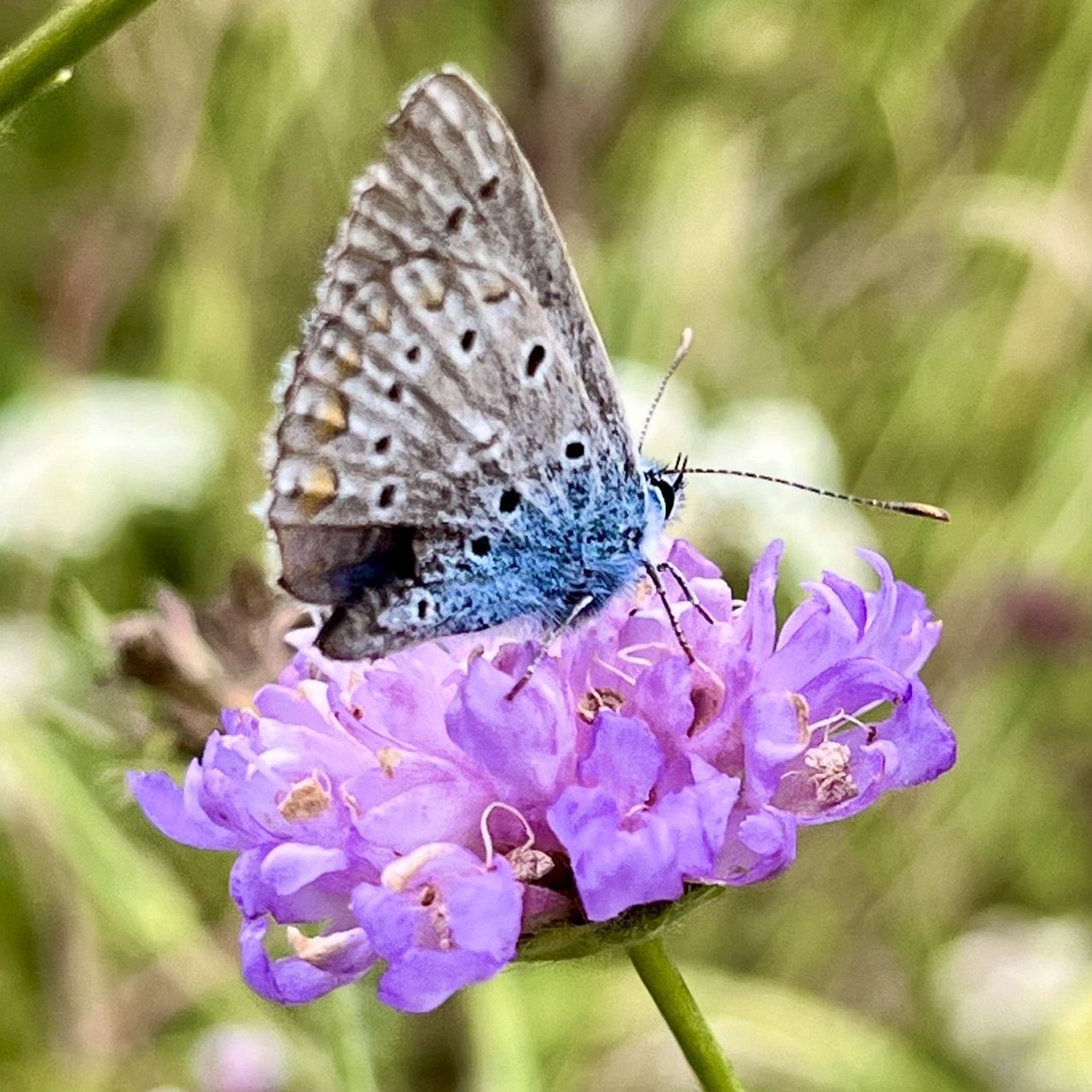A post by Laura Calderon, Anna Komendantskaya, Philip Müller, Tabea Theis & Lena Wollstäger
“How does conservation work at scale?” – Many of us students at the 2025 Agrobiodiversity Summer School were unsure about this question and eager to answer it when we visited the “Geonaturpark Frau Holle Land”. After having visited individual farms in Hesse and Thuringia, we were keen to understand how a small team without advanced equipment could sustain a vast species-rich grassland and ensure broad acceptance among stakeholders.

Conservation through collaboration
During our visit to the Geonaturpark in the Werra-Meißner district east of Kassel, we learned a key insight: conservation happens primarily through collaboration – with farmers and shepherds at the center. As Christian Bringmann, responsible for the conservation work, explains:
“Without shepherds and farmers, we would not be able to do any conservation in this area. Shepherds play a central role, especially in our nature reserves and calcareous grasslands.”
Sheep as landscape architects

Guided by their shepherds, the sheep keep the grasslands open, prevent invasive species from taking over, and stop bushes and trees from shading out rare wildflowers. It creates a unique habitat for such plant and insect species that favor extensive grasslands and meadows and would not sustain in the shadow of bushes or trees if left to natural succession. This includes some endangered plant and insect species such as the Large Blue Butterfly (Phengaris Arion) and a diversity of 50+ rare plant species per Braun-Blanquet Relevé plot of 25 m² (while in intensively used meadows there are often fewer than 15 species per 25 m²).
At the same time, the sheep are contributing to biodiversity of the entire area by (unintentionally) carrying seeds from one area of the nature park to another in their wool. The Bundesinformationszentrum Landwirtschaft confirms that particularly sheep contribute to the dispersal of seeds and insects, which can help to connect habitats and support genetic diversity through exchange [1].
The key to maintaining the species-rich grasslands is to ensure that most areas are grazed annually without overgrazing. The Hessian Ministry for the Environment, Climate Protection, Agriculture and Consumer Protection acknowledges the special role that sheep have in nature conservation as “[…] key operators for biodiversity treasure islands […]” in Hesse [2].
The challenges of grazing management
Still, this sounds easier than it is. What we did not know is that sheep, when feeding on low-nutrient grassland, can in fact lose weight and must feed externally on nutrient-dense feed. Grazing needs to be coordinated well by the shepherds to ensure grass and saplings of bushes do not reach a height where people must intervene. Once it reaches this state, operations become cumbersome and expensive. A conservation project like the one we visited needs to ensure sufficient incentives for various partners and their complex activities – especially for shepherds working in the hillsides.
Mosaic Landscapes: Biodiversity treasures
Ultimately, such mosaic structures are among the most species-rich structures in nature. Natural areas in mosaic-like landscapes can increase the value of various ecosystem services [3]. The Frau-Holle-Land Nature Park preserves and develops diverse landscapes with clear boundaries through mob grazing, a method where many animals graze a small area briefly before being moved to the next area, promoting plant diversity, improving soil health, and supporting wildlife, creating structures that are particularly rich in biodiversity.
We learned that “Schaf Schafft Landschaft” (sheep shape the land) is more than just the name of the project – it’s a reminder of the vital role of traditional grazing for nature conservation in Germany.
This blog post was written as part of the “Agrobiodiversity Summer School” in Germany in August 2025. This summer school is a cooperation project between the ZHAW Institute of Natural Resource Sciences, the Research Institute of Organic Agriculture in Switzerland and Germany (FiBL) and is supported by the Mercator Foundation Switzerland.
References
[1] Bundesinformationszentrum Landwirtschaft. (2022). Beweidung mit Schafen fördert die Biodiversität. Zukunftsfähige Nutztierhaltung. https://www.nutztierhaltung.de/schaf/management/beweidung-mit-schafen-foerdert-die-biodiversitaet/ (last access: 26.08.2025, 1:56pm)
[2] HMUKLV (Hessisches Ministerium für Umwelt, Klimaschutz, Landwirtschaft und Verbraucherschutz) (Hrsg.) (2017). Hessischer Biodiversitätsbericht 2016. Wiesbaden.
[3] Rosenfield, M. F., Miedema Brown, L., & Anand, M. (2022): Increasing cover of natural areas at smaller scales can improve the provision of biodiversity and ecosystem services in agroecological mosaic landscapes. Journal of Environmental Management, 303, 114248. https://doi.org/10.1016/j.jenvman.2021.114248